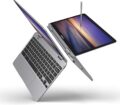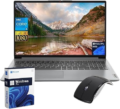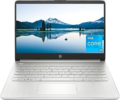
How to Choose the Best Laptop for Graphic Design: A Beginner’s Guide
If you’re a beginner in graphic design, picking the right laptop can feel like a big challenge. There are so many options available, and each one has different features. But don’t worry! This guide will help you understand what to look for so you can choose the best laptop for your graphic design needs.
1. Understand Your Needs
Before you start shopping, think about what you’ll be doing with your laptop. Are you just starting with simple designs, or are you planning to work on complex projects? If you’re a beginner, you might not need the most expensive or powerful laptop right away. However, it’s still important to choose one that can handle the basic tasks you’ll be learning.
2. Look at the Processor (CPU)
The processor, or CPU, is like the brain of your laptop. It handles all the tasks you give it. For graphic design, you’ll want a laptop with a strong processor because design programs can be demanding. Look for at least an Intel Core i5 or AMD Ryzen 5 processor. These are good choices for beginners because they provide enough power without being too expensive.
3. Check the RAM
RAM, or memory, is what your laptop uses to manage multiple tasks at once. For graphic design, 8GB of RAM is the minimum you should consider. However, 16GB is even better if you can afford it. More RAM allows you to run design software smoothly without slowing down your laptop.
4. Consider the Graphics Card (GPU)
A graphics card, or GPU, is important for graphic design because it handles visual tasks. Some laptops have integrated graphics, which means the GPU is part of the processor. While these are okay for beginners, if you can, choose a laptop with a dedicated graphics card, like NVIDIA or AMD. This will help you work with high-quality images and videos more easily.
5. Screen Quality Matters
The screen is one of the most important parts of a laptop for graphic design. You need a screen that shows colors accurately and is big enough to work on detailed projects. A screen with at least Full HD resolution (1920×1080 pixels) is a good starting point. Also, look for an IPS panel, which provides better color accuracy and viewing angles.
6. Storage Space: SSD vs. HDD
Storage is where all your files and programs are saved. There are two main types of storage: HDD (Hard Disk Drive) and SSD (Solid State Drive). SSDs are faster and more reliable, which is important when working with large design files. Aim for a laptop with at least 256GB of SSD storage. If you need more space, you can always use an external hard drive later.
7. Portability and Battery Life
As a beginner, you might want to work on your designs from different places—at home, in a café, or even at school. If that’s the case, choose a laptop that is lightweight and has good battery life. Look for a laptop that weighs around 3-4 pounds and has at least 6-8 hours of battery life.
8. Operating System: Windows vs. macOS
The operating system (OS) is the software that runs your laptop. Windows laptops are usually more affordable and have a wide variety of options. macOS, found on Apple’s MacBooks, is popular in the design world for its user-friendly interface and high-quality build. Both are good for graphic design, so choose the one you’re more comfortable with or the one that fits your budget.
9. Budget Considerations
Lastly, think about your budget. You don’t need to spend a fortune to get a good laptop for graphic design. Many affordable laptops can handle the basics just fine. However, investing a little more in a laptop with better specs can save you from needing to upgrade too soon.
Final Thoughts
Choosing the right laptop for graphic design doesn’t have to be overwhelming. Start by understanding your needs, and then look for a laptop with a strong processor, enough RAM, a good graphics card, and a high-quality screen. With these tips in mind, you’ll be on your way to finding the perfect laptop to help you grow your graphic design skills.
Remember, as you improve, you can always upgrade to a more powerful laptop. For now, focus on getting something that will help you learn and create with ease. Happy designing!


